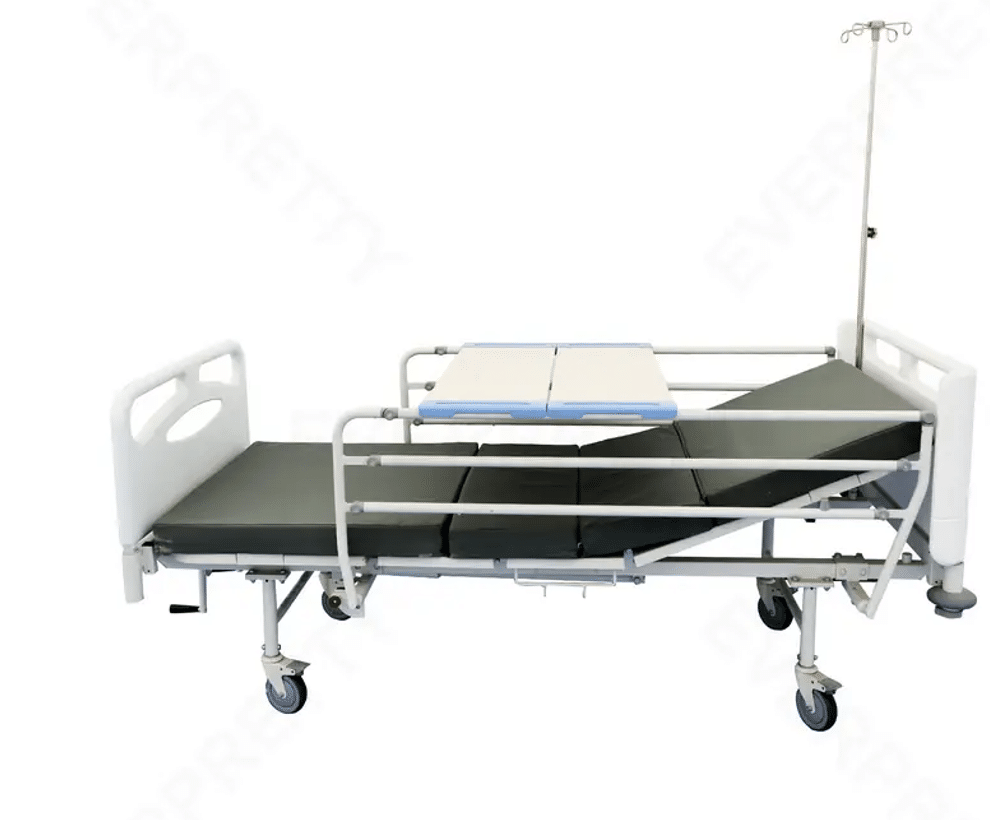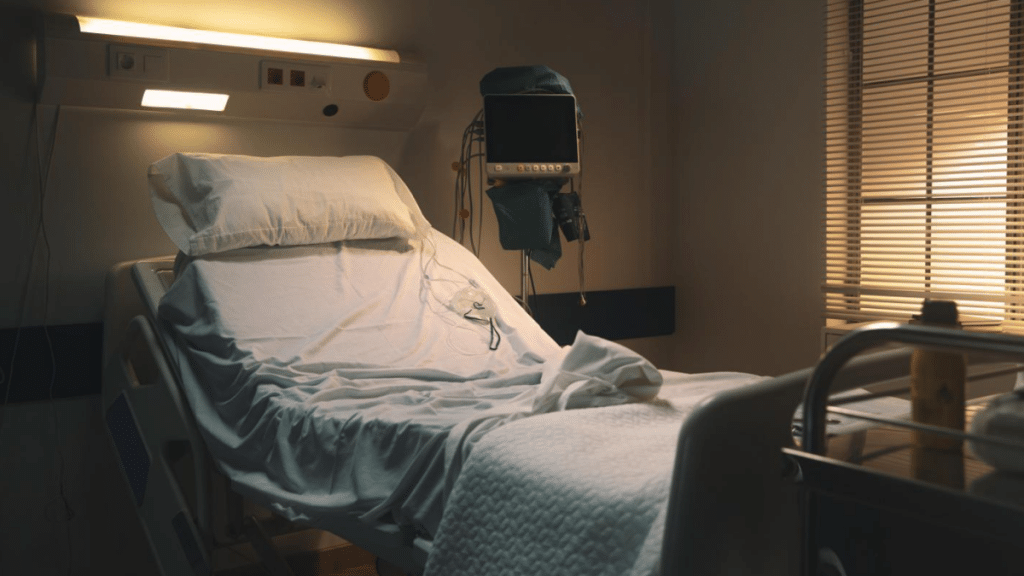Hospital beds are an essential piece of furniture used in hospitals and medical facilities for patient care and comfort. A manual hospital bed is a type of hospital bed that is adjustable using simple hand cranks or levers, allowing caregivers to raise, lower, or change the angle and position of the bed. This makes them versatile and suitable for use in various clinical areas. As patients spend the majority of their time in the hospital in bed, hospital beds need to meet basic ergonomic needs and support patient recovery. Manual hospital beds are a dependable option that fulfills this purpose.
The Versatility of Manual Hospital Beds
A manual hospital bed is an extremely versatile piece of equipment that can be used in virtually all inpatient clinical areas. Its basic design requires no electricity, making it a reliable option even during power outages. As patients have varied acuity levels and medical needs change throughout a hospital stay, adjustable manual beds can smoothly transition between care settings. This is likely a key factor in their longstanding popularity among healthcare facilities. They are suitable for areas such as:
1. Surgical
In surgical units, a manual medical bed provides flexibility for pre-op positioning, like raising the head section for reduced swelling. Its locked wheels maintain safety when the patient is sedated or emerging from anesthesia. Post-op care teams appreciate the height adjustments of these beds for efficient dressing changes of lower body incisions and wounds.
2. Maternity
Maternity wards leverage various hospital bed positions throughout labor. From seated or half-seated during the early stages to lowered transitions during delivery and elevated recovery afterward, the simple adjustments of hospital beds support natural birthing positions while maintaining structural stability for caregiver assistance as needed.
3. Pediatrics
The versatility of the manual hospital bed extends to pediatric areas as well, where it accommodates a range of development levels. Younger patients feel more secure in beds lowered partially to the floor for safe exits or play. Their removable sections tailor spaces for various medical equipment, too. Caregivers find manual flexibility improves little patients’ hospital experience.
4. Dental
Dental clinics and operating rooms appreciate manual beds’ compactness in tight quarters. From supine oral exams to raised seating for fillings or root canals, accurate positioning streamlines procedures without bulky equipment. Furthermore, the locking casters of these beds stabilize safely near drills or equipment while permitting quick room changes.
The 5 Essential Features a Manual Hospital Bed Should Have
When selecting a hand-operated hospital bed, it is important to carefully consider key features that impact patient safety, medical outcomes, and the long-term functionality of the product. The 5 essential features a manual hospital bed should have include:
1. Adjustable Positions
Ideally, a hospital bed should offer multi-position adjustability, including head-up, foot-up, or full-fowler positions. This accommodates patients’ range of motion needs, supports circulation, and prevents complications like pneumonia. Beyond basic back elevation, ideal manual beds offer flexible leg, knee, and even foot settings. This provides optimum circulation regardless of diagnosis.
2. Safety Features
Critical safety features of a manual medical bed start with secure side rails and guardrails to prevent falls or roll-offs during sleep or sudden movements, particularly for vulnerable patients like the elderly or those recovering from surgery or injuries. You should look for adjustable heights that match bed levels to augment protection. Other safety features like crash pads, anti-squish guards, and other barricades permanently attached for vulnerable users are also important.
3. Hygienic Design
A quality hand-operated hospital bed features a hygienic design. Seamless steel frames are easy to clean compared to crevices harboring dirt or microbes. Furthermore, waterproof covers are also recommended as they shed fluids for easy cleanup between patients.
4. Maneuverability
The optimal maneuverability of a manual hospital bed is another essential feature to look for. The bed should have smooth-rolling, dual-locking casters that can bear substantial weight loads seamlessly. Facility workflows require navigating tight corridors and elevators promptly during emergencies or time-sensitive transfers.
5. Sturdy Construction
Finally, evaluating a bed’s long-term durability protects both patients and investment costs. A strong, durable steel framework and heavy-duty components are crucial as they ensure long product life even under substantial weight loads and frequent use. Quality accessories like crash rails are also valuable. Overall, the sturdiness of the bed maintains safety and lowers lifecycle costs.
Brand Highlight: OEKAN – A Leading Hospital Bed/Hospital Furniture Manufacturer
OEKAN is a leading hospital bed manufacturer with years of expertise in hospital and medical furniture. With a large production facility and sales offices worldwide, the brand supplies top-quality, custom hospital products to various healthcare organizations. Key characteristics of OEKAN manual hospital beds include adjustable heights, multi-position backrests and leg sections, heavy-duty steel construction, and durable powder-coated steel frames. In addition to movable hospital beds, the manufacturer also offers foldable hospital beds for space-saving storage. These save floor space in busy wards or clinics when not in use.
While hospital beds are the brand’s specialty, OEKAN also provides a comprehensive range of other hospital furniture, including treatment chairs with adjustable settings, modular ward furniture systems, medical supply trolleys for transporting equipment, bedside cabinets, and lockers, chair/wheelchair scales, dentist/doctor’s exam chairs, and more. All of OEKAN’s products meet international safety and quality certifications. The company’s large variety of customization options ensures perfect configurations for any healthcare facility’s needs and budgets.

Conclusion
Overall, manual hospital beds remain an essential clinical furniture staple due to their versatility, affordability, and ergonomic design. Their adaptable quality continues, making them a mainstay of inpatient care worldwide. When buying hospital beds, consider essential features like adjustable positions, safety components, hygienic materials, and maneuverability to ensure enhanced patient care and support. In addition to these, buying from a reputed hospital bed manufacturer is also important. The leading medical furniture brand, OEKAN, is a recommended choice. The manufacturer specializes in offering feature-rich, durable, and customizable solutions to outfit all patient areas. To learn more about OEKEAN’s hospital furniture offerings, visit its official website.
